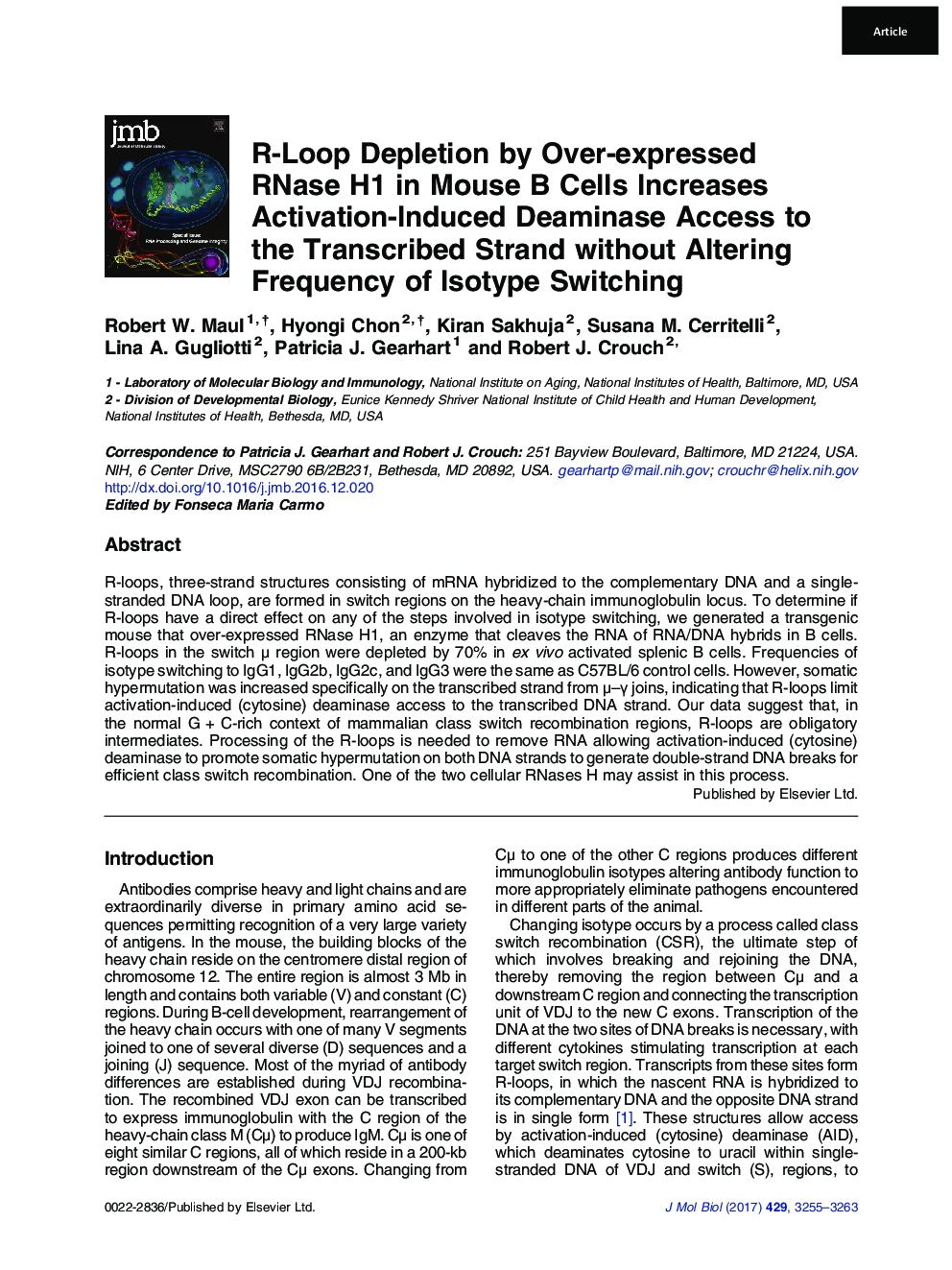| Article ID | Journal | Published Year | Pages | File Type |
|---|---|---|---|---|
| 5533105 | Journal of Molecular Biology | 2017 | 9 Pages |
â¢Importance of R-loops in isotype switching in B cellsâ¢New transgenic mouse over-expressing RNase H1â¢Decrease in R-loops does not alter frequency of switching.â¢Somatic hypermutation increased on transcribed DNA strand.
R-loops, three-strand structures consisting of mRNA hybridized to the complementary DNA and a single-stranded DNA loop, are formed in switch regions on the heavy-chain immunoglobulin locus. To determine if R-loops have a direct effect on any of the steps involved in isotype switching, we generated a transgenic mouse that over-expressed RNase H1, an enzyme that cleaves the RNA of RNA/DNA hybrids in B cells. R-loops in the switch μ region were depleted by 70% in ex vivo activated splenic B cells. Frequencies of isotype switching to IgG1, IgG2b, IgG2c, and IgG3 were the same as C57BL/6 control cells. However, somatic hypermutation was increased specifically on the transcribed strand from μ-γ joins, indicating that R-loops limit activation-induced (cytosine) deaminase access to the transcribed DNA strand. Our data suggest that, in the normal G + C-rich context of mammalian class switch recombination regions, R-loops are obligatory intermediates. Processing of the R-loops is needed to remove RNA allowing activation-induced (cytosine) deaminase to promote somatic hypermutation on both DNA strands to generate double-strand DNA breaks for efficient class switch recombination. One of the two cellular RNases H may assist in this process.
Graphical AbstractDownload high-res image (152KB)Download full-size image
